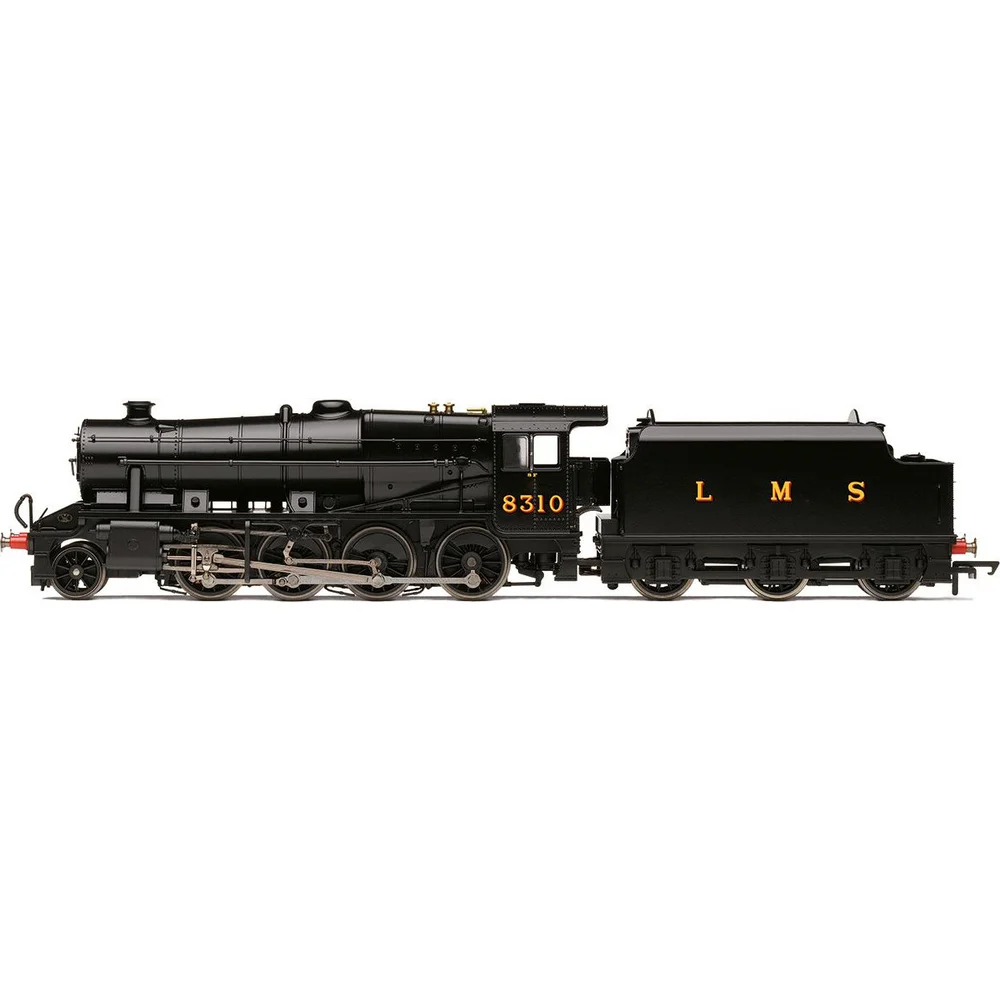Hornby R30281
London, Midland & Scottish Railway Stanier Class 8F 8310 London, Midland & Scottish Railway Black
Class & Prototype
- Class: London, Midland & Scottish Railway Stanier Class 8F
- Traction: Steam
- Built: 1935-1946
- Total Built: 852
- Running Number: 8310
The LMS Stanier Class 8F was Britain's most successful freight locomotive design, with 852 examples built between 1935-1946. Designed by Sir William Stanier to replace the LMS's inadequate freight fleet, these robust 2-8-0 locomotives featured 18½" x 28" cylinders, 225 psi boiler pressure, and 32,440 lbf tractive effort. Selected as Britain's standard WW2 freight locomotive, 8Fs served globally in Egypt, Iran, Turkey, and Palestine, with many remaining overseas permanently. On home metals, they handled 1,000-ton coal trains until steam's end in 1968. Eight locomotives survive in preservation, while modern models from Hornby and upcoming Bachmann releases ensure continued appeal for railway modellers seeking authentic British freight operations.
Operator & Livery
- Operator: London, Midland & Scottish Railway
- Livery: Black
- Era: 3 - The big 4 – LMS, GWR, LNER & SR
The London, Midland & Scottish Railway (LMS) was Britain's largest railway company from 1923-1948, formed by merging over 120 independent railways under the Railways Act 1921. Operating 7,790 route miles across England, Scotland, Wales, and Northern Ireland, the LMS became the world's largest transport organisation and the British Empire's biggest commercial enterprise. Famous for iconic locomotives like the streamlined Princess Coronation class, versatile Black Fives, and Royal Scots, the company evolved from inherited pre-grouping designs to revolutionary Stanier innovations. The LMS operated major routes including the West Coast Main Line from London Euston to Scotland, serving as the UK's second-largest employer after the Post Office. Nationalised in 1948 to form British Railways' London Midland Region, the LMS legacy continues through extensive preservation efforts and remains a favourite subject for railway modellers seeking authentic British steam-age prototypes.
The LMS plain black livery served as the standard finish for freight locomotives and represented practical railway economics during the company's existence. Applied without lining or embellishment, this utilitarian scheme recognised that goods engines operated in inherently dirty conditions where elaborate paintwork proved both expensive and impractical.
Most LMS freight classes including the ubiquitous 0-6-0 goods engines, 0-8-0 heavy freight locomotives, and tank engines used for shunting duties wore plain black throughout their service lives. The scheme extended beyond locomotives to goods wagons, where black paint provided adequate weather protection at minimal cost.
During World War II, plain black became increasingly common as material shortages and wartime economies forced the abandonment of more elaborate liveries. Even some passenger locomotives temporarily adopted unlined black finishes when crimson lake supplies became unavailable. The practical benefits of black paint - its ability to hide dirt, soot, and industrial grime - made it ideal for locomotives working coal trains, mineral traffic, and heavy industrial duties.
For modellers, plain black represents the workhorse reality of LMS operations, particularly appropriate for freight yards, colliery branches, and industrial settings where authentic weathering and operational realism take precedence over passenger train glamour.
